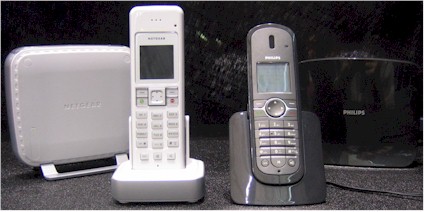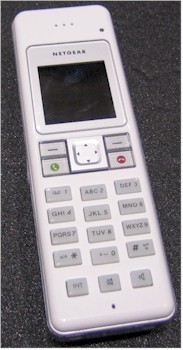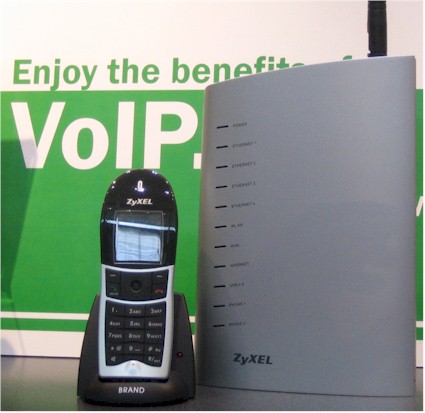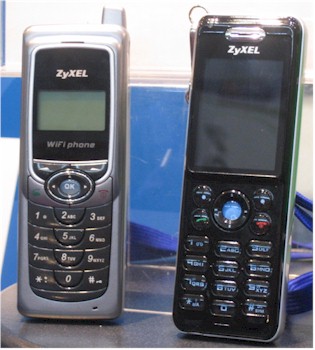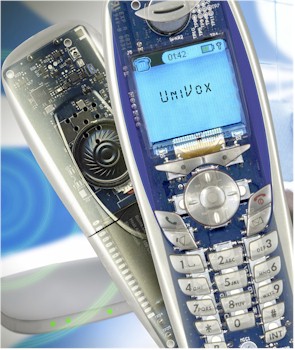Fall VON 2006 Report: VoIP is Dead…Again
When the world’s leading cheerleader for Voice over IP technology changes his focus, you know that the party is over. Visitors to the Fall VON show in Boston this week found that Jeff Pulver’s VON now stands for “Voice, Video & Vision” instead of “Voice on the Net” as it has in years past. I probably should have suspected something was up when most of the pre-show PR emails and calls I received were for video-based services. But then again, I’ve never been accused of being particularly fast on the uptake.
Pulver’s refocus should probably come as no surprise given all the attention that YouTube and its surrounding cloud of wannabes have garnered recently. And since voice is so, uh, boring compared to video, it’s only natural that pulvermedia should follow the buzz…and money.
VoIP is definitely not where the money is these days, given the spectacular flop of Vonage’s IPO this past May – widely regarded as one of the worst IPOs in recent memory. Another sign is AOL’s decision to kill its TotalTalk VoIP service in order to focus on its AIM Phoneline offering. Voice is free, and getting free-er, and if you don’t have something unique and catchy to offer, you’re out of business, or will be soon enough.
Skype has done its part to put the squeeze on the meager profitability that retail VoIP had and help it to join the ranks of former technology darlings. The other stake in the heart of independent VoIP providers such as Vonage is the rise of VoIP bundles from cable providers, i.e. the ol’ “triple play” play. All that is needed now is for the telcos to start pushing VoIP to their DSL customers. But since that would allow customers to bypass money-making in-state calling, we probably won’t see that for awhile.
Even the pre-conference session on Fixed Mobile Convergence – aka The Cellcos’ Worst Nightmare – provided neither excitement nor insight, with the main take-away being “it will happen at some point with some mix of technologies”. It did seem, however, that the UMA approach was voted least likely to succeed – although that could just be due to the mix of panelists that were chosen.
Monday’s highlight was definitely the “IM: The State of Presence” panel at the end of the day. This session had reps from AOL, Google, Skype, Microsoft and Yahoo answering some thoughtful questions posed by moderator Carl Ford of pulvermedia. Although there were no competitive fireworks, there were a few interesting factoids that emerged:
- Mike Jazayeri (representing Google Talk) and Nitzan Shaer (representing Skype) had previously worked at Microsoft
- Yahoo and Microsoft pegged the percentage of monthly video IM usage at around 25%
- Panelists agreed that there was more “broadcast / one-way” video used than two-way
- Nitzan Shaer noted that total monthly VoIP traffic amounted to around 40 billion minutes, while both PSTN and mobile traffic run around 4-5 trillion each
- IM penetration in the U.S. runs around 50%, vs. 80-90% (about the same as email) in Europe and Asia
There was a bit of a defining moment at the end of the session when Carl asked each panelist for his predictions for the next 18 months. Dan Casey from Microsoft and Jeff Bonforte of Yahoo both said not much could happen over so short a time. But Nitzan Shaer of Skype said that 18 months was a very long time and that a lot could happen – an appropriate view from a company that has changed the face of VoIP and IM in just three years!
Tuesday’s opening keynotes included Jeff Pulver’s usual state-of-the-universe talk that, instead of celebrating VoIP, reinforced his view that video is the new VoIP – at least in terms of where his focus will be. This was followed by Ted Leonsis of AOL who gave what amounted to a 30+ minute commercial for AOL’s range of video products.
Phones and Stuff
VON is more of a B2B than B2C show, so there were not a lot of exciting consumer VoIP products to check out. Probably the biggest news in the consumer VoIP space was the Skype Cordless phones from OEM/ODM Ascalade announced a few weeks ago by Skype. The photo below shows the Philips VoIP841 and as-yet-unnamed (and unannounced) Netgear version side by side in Ascalade’s booth.
Philips and Netgear Cordless Skype Phones from Ascalade (click to enlarge)
The Philips handset definitely looks more polished, with the Netgear looking like a bulkier (and larger) version of its Wi-Fi Skype phone. But the Netgear handset’s keypad somehow made the phone look unfinished next to the Euro-styled Philips version. Note that both handsets have built-in speakerphones (unlike the current crop of Wi-Fi Skype phones).
Netgear Cordless Skype Phone Handset (click to enlarge)
Since neither of these phones, nor the crop of Skype Wi-Fi handsets support Skype text chat, I assume that Skype’s current design spec for these devices doesn’t provide for it. By the way, pricing hasn’t been officially set for either the Philips or Netgear phones, but I don’t think you’re going to see either one for the $100 or so that they should sell for.
A stop by ZyXEL’s booth turned up an assortment of VoIP gateways in various combinations with routers, 802.11g AP’s and ADSL2+ modems. The most interesting was the P-2302HWUDL 802.11g Wireless VoIP Station Gateway with DECT Station shown below with an unnamed DECT handset.
ZyXEL Wireless VoIP Gateway with DECT Station (click to enlarge)
ZyXEL is primarily targeting service providers with this product, which should be out in November and has no pricing set as yet. But the booth rep said it could eventually find its way to being offered directly to consumers willing to deal with the complexities of BYO Device VoIP.
More Stuff
ZyXEL was also displaying its next-generation V650 VoIP Wi-Fi phone (on the right in the photo below). It’s made for SIP V2, has a nice, big, bright color LCD screen and supports WEP and WPA, but not WPA2. It’s due out in December for around $250 list.
ZyXEL P-2000W v2 and V650 VoIP Wi-Fi phones (click to enlarge)
I dropped in on Polycom to check out its new SoundPoint IP 650 desktop phone with “HD Voice”. The side-by-side demo of the phone with its previous-generation version (sans HD Voice) was impressive, with the difference between HD Voice’s 20+ kHz audio bandwidth vs. the usual ~4 kHz immediately obvious. But since most home and SOHO users don’t need a six-line, $450 SIP phone, I didn’t get too excited.
But on my way of of the booth, I happened to see Polycom’s Communicator, a $129 Skype speakerphone that has been out for a few months and also uses the HD Voice technology. Although you can buy many Skype speakerphones for less money, I don’t think you can find one with the sound quality to equal what I heard from this device.
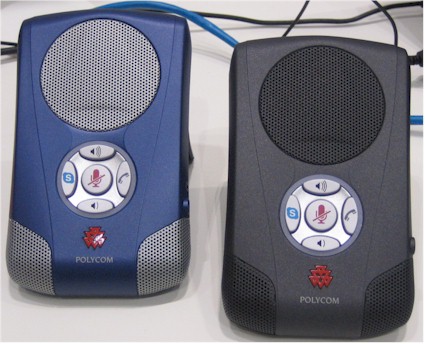
Polycom Communicator Skype Speakerphone in two stylish colors
For a chip’s-eye view of things, I stopped at CSR to check out its low-cost UniVox chipset for VoWiFi phones. You may know CSR as the dominant supplier of Bluetooth devices, but it also has a growing business supplying its UniFi 802.11b/g single-chip radio to dual-mode Cell/WiFi phone makers.
CSR UniVox VoWiFi Reference Design Phone
UniVox combines the UniFi chip with a MAP (Media Applications Processor) chip and throws in a royalty-free reference design that CSR says will yield a full-featured VoIP Wi-Fi phone for a total bill of material cost of around $20. Sorry, but no color screen at this price point and no built-in Bluetooth either. This means that a manufacturer using UniVox could produce a VoWLAN phone retailing for around $60, instead of the $200+ you now see.
UniVox’ real claim to fame, however, is extremely low power consumption, using tricks and technology developed over five generations of Bluetooth chipsets. CSR says that phones using UniVox will have 20 hours of talk time and 400 hours of standby using a 1500 mAh battery. Unfortunately, I won’t be able to verify these claims until the first end-products using UniVox appear sometime toward the end of Q1 2007.
I got a different take on the VoIP Wi-Fi handset chip market during a visit with Marvell. They were featuring the 88W8616 WiFi VoIP chipset, which is due to start showing up in phones soon. Curiously, Marvell had two Accton Skype Wi-Fi handsets on display, one with the SMC logo and the other without. I couldn’t get a clear answer as to why this was, since the SMC version I recently reviewed was based on TI silicon. But if I correctly read between the lines, there could soon be two vendors powering Accton’s line of Skype Wi-Fi phones.

